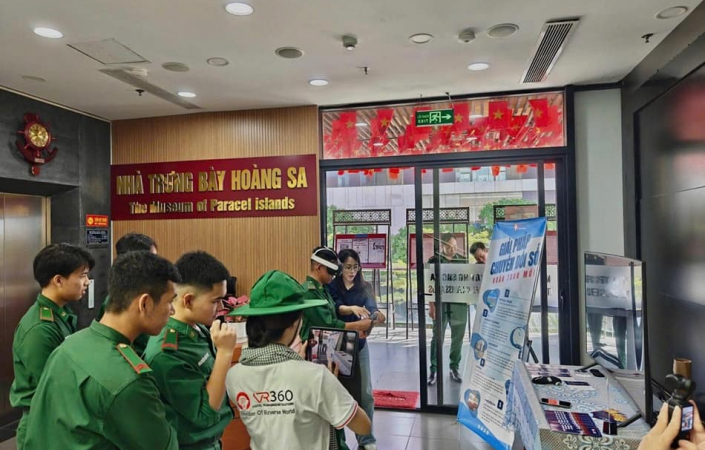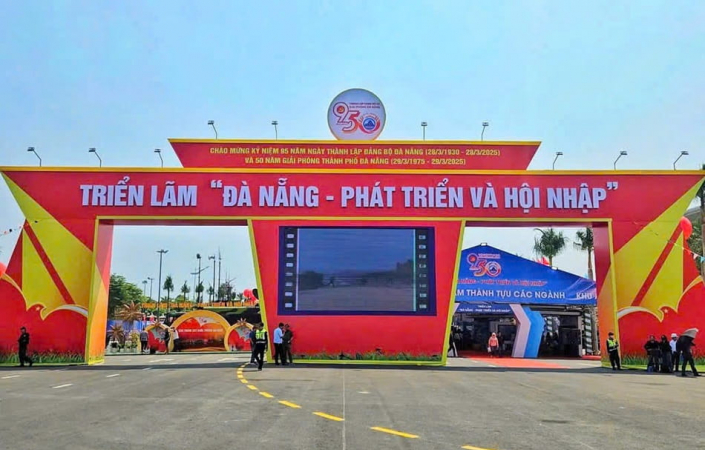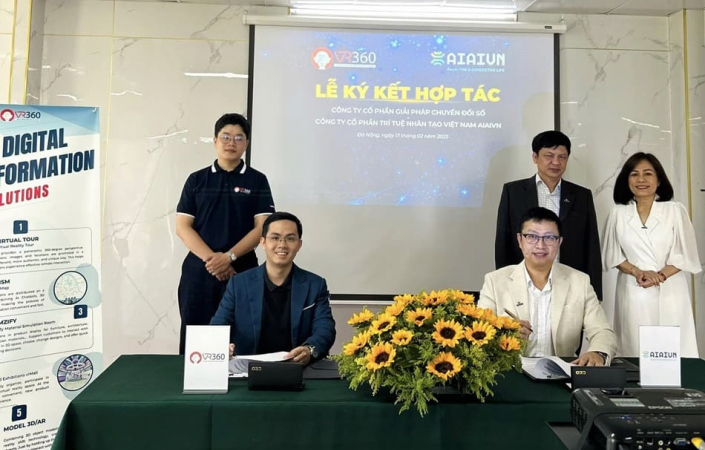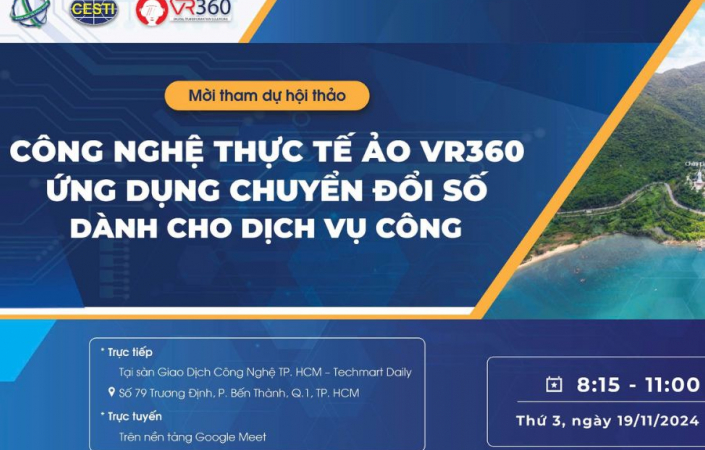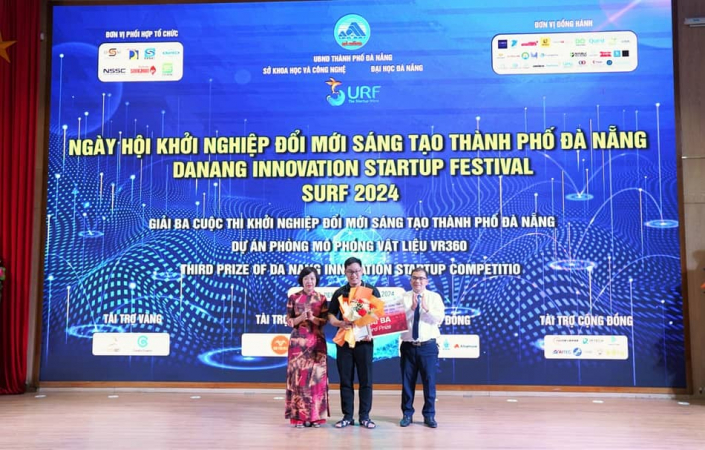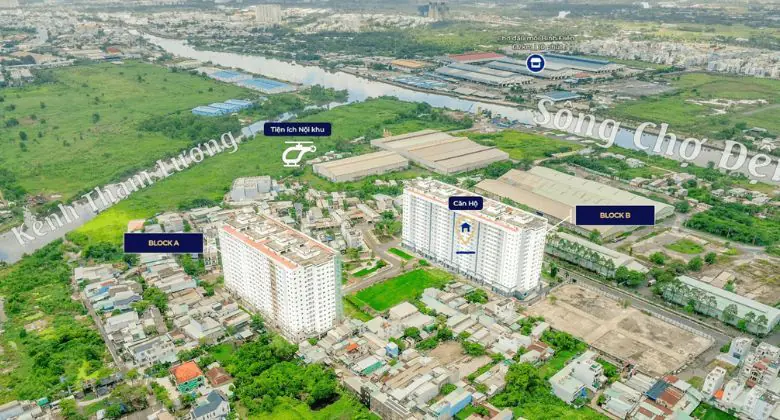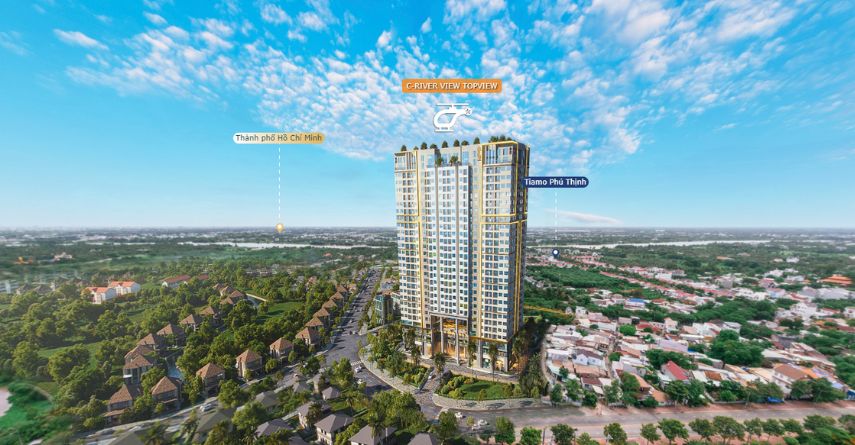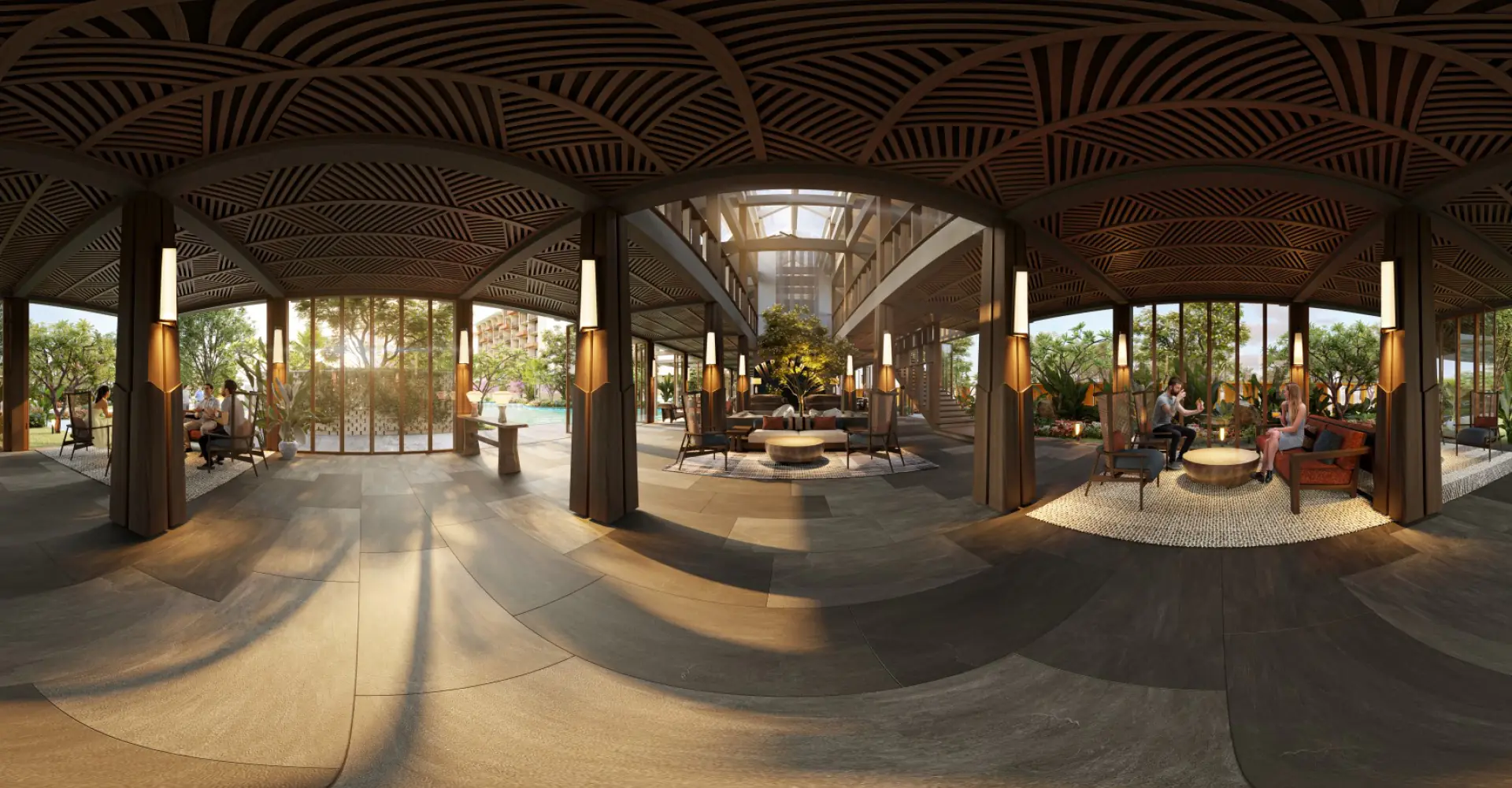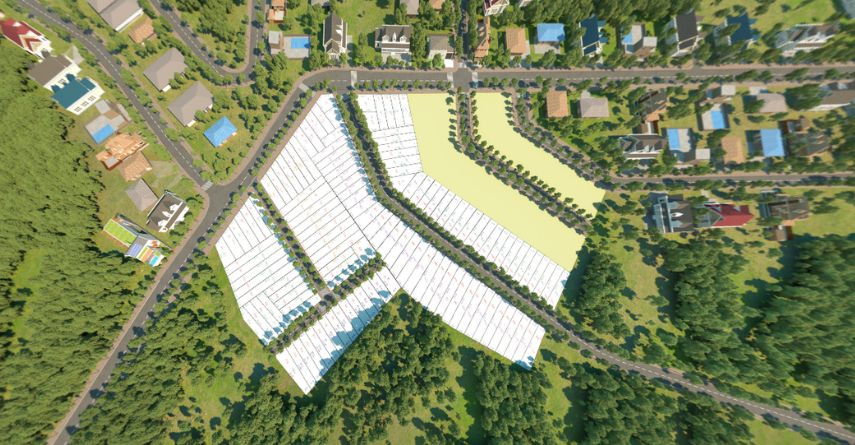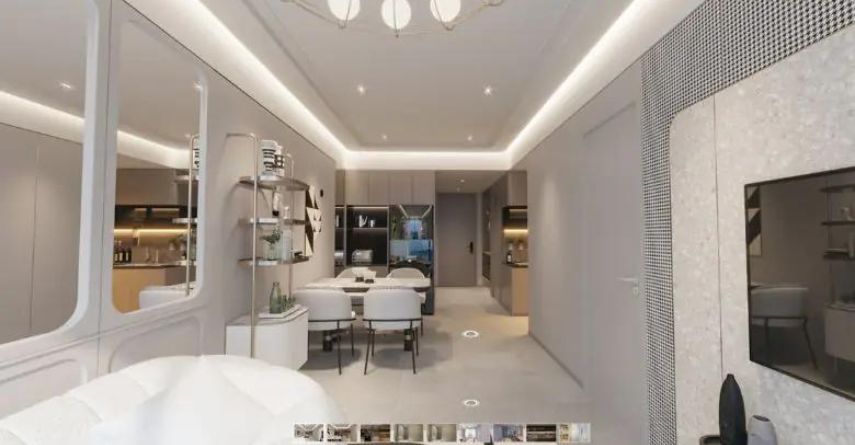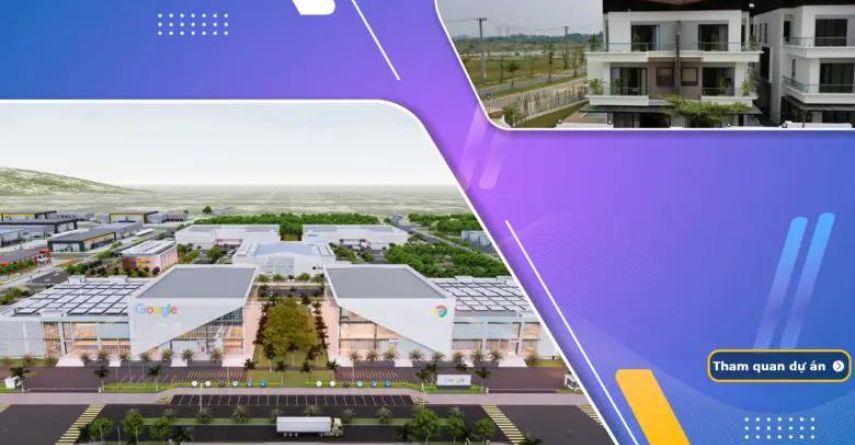Sign up to receive quotes
Virtual reality technology solutions for the real estate industry
Table of content
1. Application of virtual reality technology in real estate
1.1. Display real estate in a virtual space
1.2. Staging and simulating real estate spaces before completion
1.3. Virtual guide for tenants
2. Benefits of applying virtual reality in real estate
2.3. Enhancing project credibility
2.4. Realistic and detailed experience
2.5. Easy information integration with multiple features
2.6. Intergration into business
3. Virtual reality services suitable for all business
4.3. Integration of diverse content
4.4. Information management system
4.5. Multi-device compatibility
In an era where visual experience plays a pivotal role in investment decisions, virtual reality technology is becoming an indispensable part of the global real estate industry's digital transformation strategy.
According to research by Goldman Sachs, by 2025, more than 1.4 million real estate agents are expected to adopt VR technology—an impressive figure that clearly reflects both the growth rate and strategic priority of this solution.
In practice, customers are increasingly familiar with "touring" projects via 3D maps, virtual sand tables, and model apartments directly embedded on websites or digital platforms. Up to 95% of customers tend to contact projects that offer immersive 3D virtual space experiences.
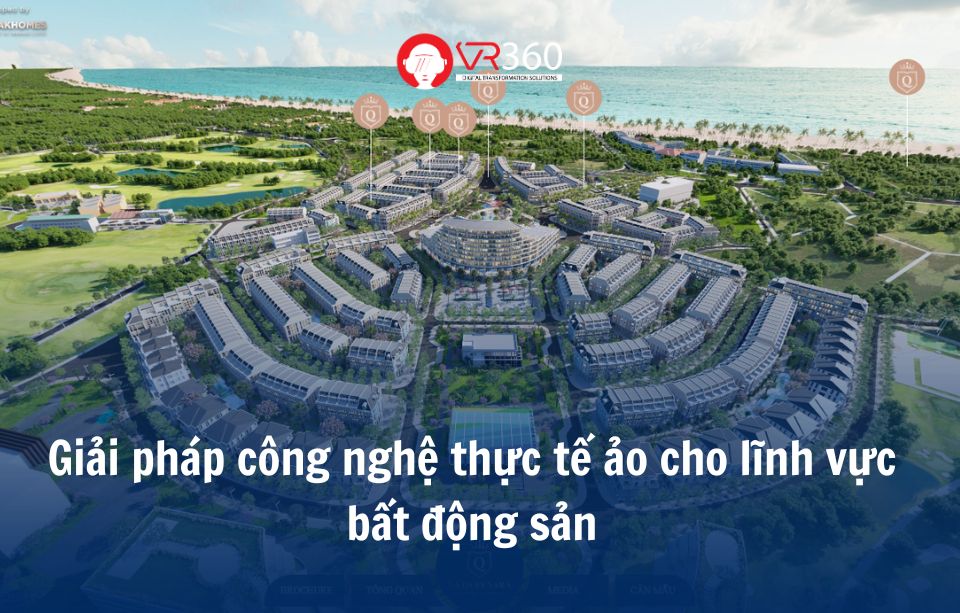
To meet the needs of investors and real estate agents, VR360 offers a range of cutting-edge technology solutions such as VR360 Virtual Tour, Matterport 3D Scanning, 3D-AR Modeling, 360 Photography, and 360 Video. These solutions help create accurate, realistic, and high-resolution 3D project spaces, 360 environments, and virtual sand tables, enabling investors to access project information clearly and precisely.
👉 Refer now: VR360's featured projects in the Real Estate sector
With VR and 3D technology, investors can explore the entire project space from multiple perspectives, allowing them to easily assess the scale, value, and potential of a real estate development. This leads to faster and more effective investment decisions. At the same time, adopting digital technology enhances the project's professionalism and credibility in the eyes of clients and partners.
In an increasingly competitive market, the 360 Virtual Tour serves as a strategic catalyst that helps real estate businesses accelerate growth, differentiate themselves, and expand investment connections.
1. Application of virtual reality technology in real estate
Depending on the business direction, virtual reality technology offers investors several useful applications, such as:
1.1. Display real estate in a virtual space
With just a few simple steps, investors can explore dozens of real estate locations in a matter of minutes with ease. Applying virtual reality technology in displaying real estate allows investors to conveniently choose suitable projects and make accurate investment decisions without the need for an on-site survey.
This reduces travel time and costs for investors. As a result, it provides a memorable and engaging experience for investors. Additionally, this technology performs well on various smart devices, allowing investors to easily explore and exchange information about the project quickly, making the consulting and sales process smoother.
1.2. Staging and simulating real estate spaces before completion
For real estate projects that are sold before the physical property is available or completed, applying virtual reality in real estate to simulate the project space can help investors easily envision the property, which could potentially be their future home. At the same time, it provides investors with valuable information about the project, enabling them to make quick and effective decisions regarding deposit contracts or investments. This is also an excellent solution for real estate agents to market unfinished projects or completed ones with minimal advertising costs.
CONSULTING VIRTUAL REALITY SOLUTIONS FOR THE REAL ESTATE SECTOR
RECEIVE CONSULTATION1.3. Virtual guide for tenants
For rental properties, landlords often need to communicate extensively with tenants, from essential information to minor details such as the location of circuit breakers or room temperature controls. By integrating virtual reality technology into projects, landlords can communicate more effectively with tenants.
(1).jpg)
Through virtual reality solutions, tenants can experience 3D virtual tours to gain a clear understanding of the electrical and plumbing systems and the available amenities within the apartment or standalone house. This solution is particularly beneficial for short-term rental properties during holiday seasons.
The virtual property space, enriched with interactive guidance features, benefits both tenants—who can enjoy a seamless and hassle-free stay—and landlords, who no longer need to provide repetitive instructions to different guests. It also helps tenants avoid unnecessary issues and reduces the need for frequent communication with landlords.
2. Benefits of applying virtual reality in real estate
The undeniable value that virtual reality technology brings to the real estate industry is evident through the following key advantages:
2.1. Time savings
This is arguably the greatest benefit—virtual reality solutions save time for both investors and property owners. Investors can avoid delays in visiting their projects or properties for various objective reasons. Instead, they can simply access an online link to explore the project through immersive 3D tours anytime, anywhere.
2.2. Cost efficiency
Developing feature-rich 3D virtual tours may seem expensive, but in fact, this technology helps investors save many costs such as personnel, premises, and store construction costs, by using the power of 360-degree video and computer graphics. Today, creating a guided 360-degree video tour with detailed utilities and features inside a project requires only a panoramic camera and basic rendering.
2.3. Enhancing project credibility
Virtual reality technology in real estate is regarded as a key tool for enhancing customer experiences. It helps investors gain a comprehensive understanding of a project's scale, layout, amenities, and legal information. This builds trust, facilitates informed decision-making, and increases conversion rates.
(1).jpg)
2.4. Realistic and detailed experience
With virtual models, 360-degree spaces, and Virtual Tours, investors are offered an immersive experience of the entire project. Viewers can move, rotate, and interact with the project from various perspectives, providing a comprehensive understanding of the development.
2.5. Easy information integration with multiple features
The VR360 Tour platform enables seamless integration of information about real estate projects, including contact details, legal documents, amenities, and more. Additionally, features such as virtual models, 3D projects spaces, and 360-degree environments allow investors to access accurate and detailed information with ease.
2.6. Intergration into business
3D Project space and virtual model built by VR360 are easily integrated into the project's official website. During the integration process, a technical team ensures smooth and seamless operation. This allows investors to conveniently explore and visualize the value and quality of the project with precision.
%20(960%20%C3%97%20413%20px).jpg)
3. Virtual reality services suitable for all business
VR360 services tailored for the real estate sector include Virtual Tours, 360-degree photography, and 360-degree video recording.
VR360 Virtual Tour - Immersive Virtual Tour
The Virtual Tour service provides an interactive experience, allowing users to explore project spaces and model apartments digitally across various devices. Moreover, businesses can integrate detailed information such as utility services, legal details, pricing, and addresses. This not only enhances project credibility but also helps convince investors to make quicker decisions.
>>> See more details here: VR360 Virtual Tour - Web 360 - 360 Tour - Sa Bàn Ảo
360-Degree photography
The 360-degree photography service delivers multi-dimensional images that vividly showcase the project spaces, offering a more engaging alternative to traditional 2D images. With high compatibility across platforms such as Facebook, websites, and Google Street View, 360-degree images effectively capture investor interest and drive interaction. This creates optimal conditions for sales teams to close deals successfully.
>>> Learn more about the 360-degree photography service here: https://vr360.com.vn/photography
CONSULTING VIRTUAL REALITY SOLUTIONS FOR THE REAL ESTATE SECTOR
GET CONSULTATION360-Degree Video
The 360-degree video recording service utilizes advanced technology and state-of-the-art equipment to create panoramic, multi-dimensional videos of project spaces, model apartments, resorts, and more, ensuring the highest resolution quality. These 360-degree videos are invaluable resources for promoting project visuals to investors and brokers. Additionally, they are easily compatible with social media platforms such as Facebook and YouTube.
>>> Learn more here: https://vr360.com.vn/video-360
4. Key features
4.1. Virtual model
The virtual model provides a comprehensive overview of each area, allowing investors to easily visualize the project's scale, structure, location advantages, internal amenities, unit sizes, and prices—all within a 360-degree interactive environment.
(1).jpg)
- You may be interested in: 360-Degree Virtual Model - A Powerful Marketing Tool for Businesses
4.2. Unlimited viewing angles
With virtual reality technology applied to real estate, investors can freely select various viewing angles for different spaces. This allows for a detailed and intuitive exploration of the project's interior, exterior, geographical location, and overall layout.
4.3. Integration of diverse content
Beyond captured images, businesses can incorporate additional information such as text, links, legal documents, records, images, videos, info labels, maps, and more. This integration makes it easier for investors to access and review information, facilitating quicker decision-making.
4.4. Information management system
With complete control over technology, the VR360 platform provides comprehensive management tools, enabling investors to easily update and track project information, legal details, and other essential features.
4.5. Multi-device compatibility
VR360 services are fully compatible with all smart devices, including computers, tablets, smartphones, and VR headsets.
Related Articles:
- Visual Promotion Solutions for Hotels/Resorts
- Visual Promotion Solutions for Tourist Attractions/Museums
- Visual Promotion Solutions for the Architecture/Construction Industry
CONTACT TO COOPERATE WITH VR360
VR360 – INNOVATE TO DIFFERENTIATE
- Fanpage: https://www.facebook.com/vr360vnvirtualtour/
- Hotline: 0935 690 369
- Email: infor@vr360.com.vn
- Address:
- 123 Pham Huy Thong, Son Tra, Da Nang
- Citilight Building, 45 Vo Thi Sau Đakao, District 1, Ho Chi Minh city
- 3B Dang Thai Than, Phan Chu Trinh, Hoan Kiem, Ha Noi
Table of content
1. Application of virtual reality technology in real estate
1.1. Display real estate in a virtual space
1.2. Staging and simulating real estate spaces before completion
1.3. Virtual guide for tenants
2. Benefits of applying virtual reality in real estate
2.3. Enhancing project credibility
2.4. Realistic and detailed experience
2.5. Easy information integration with multiple features
2.6. Intergration into business
3. Virtual reality services suitable for all business
4.3. Integration of diverse content
4.4. Information management system
4.5. Multi-device compatibility
Latest News
Báo chí, nhịp cầu nối đảo xa
 19/06/2025
19/06/2025 VR360 | Thông báo lịch nghỉ lễ 30/04 & 01/05
 26/04/2025
26/04/2025 Triển lãm Đà Nẵng - Phát Triển và Hội Nhập: Chặng đường 50 năm
 28/03/2025
28/03/2025 VR360 và AIAIVN ký kết MOU, thúc đẩy các giải pháp tích hợp 360, 3D và AI
 05/03/2025
05/03/2025 Tăng trải nghiệm với những tính năng nổi bật nên có trong Virtual Tour
 05/03/2025
05/03/2025 VR360 | Thông báo lịch nghỉ tết nguyên đán 2025
 20/01/2025
20/01/2025 Articles on the same topic
Báo chí, nhịp cầu nối đảo xa
 19/06/2025
19/06/2025 VR360 | Thông báo lịch nghỉ lễ 30/04 & 01/05
 26/04/2025
26/04/2025 Triển lãm Đà Nẵng - Phát Triển và Hội Nhập: Chặng đường 50 năm
 28/03/2025
28/03/2025 VR360 và AIAIVN ký kết MOU, thúc đẩy các giải pháp tích hợp 360, 3D và AI
 05/03/2025
05/03/2025 Tăng trải nghiệm với những tính năng nổi bật nên có trong Virtual Tour
 05/03/2025
05/03/2025 VR360 | Thông báo lịch nghỉ tết nguyên đán 2025
 20/01/2025
20/01/2025 Phòng mô phỏng Roomzify ghi danh trong Top 10 Make in Vietnam 2024
 16/01/2025
16/01/2025 Mời tham dự hội thảo Công nghệ thực tế ảo VR360 ứng dụng chuyển đổi số dành cho dịch vụ công
 31/10/2024
31/10/2024 Hội thảo Quốc gia về Chính phủ số tại Đà Nẵng
 28/10/2024
28/10/2024 VR360 đạt giải Ba chung kết cuộc thi khởi nghiệp SURF 2024
 13/09/2024
13/09/2024 


.jpg)
